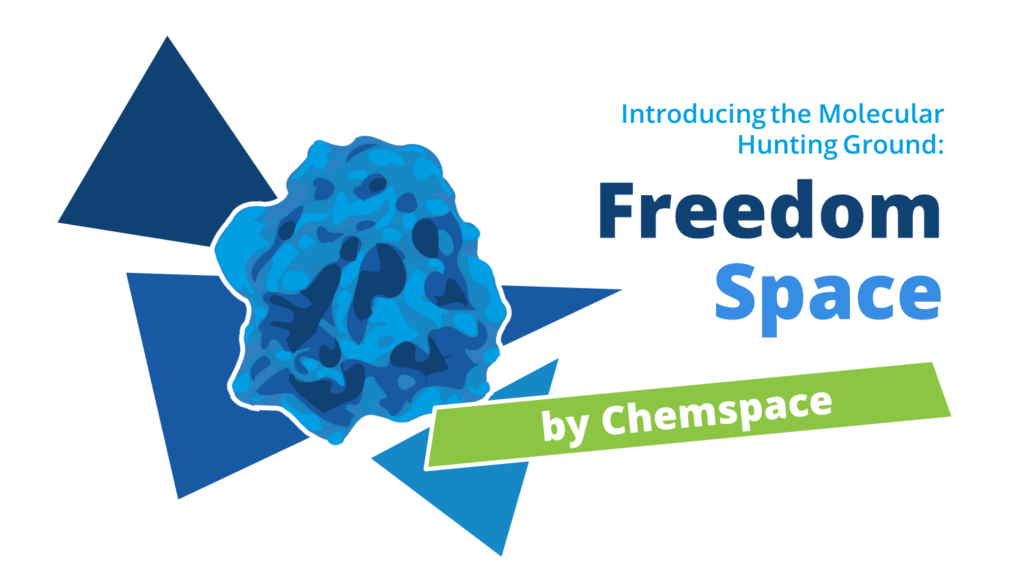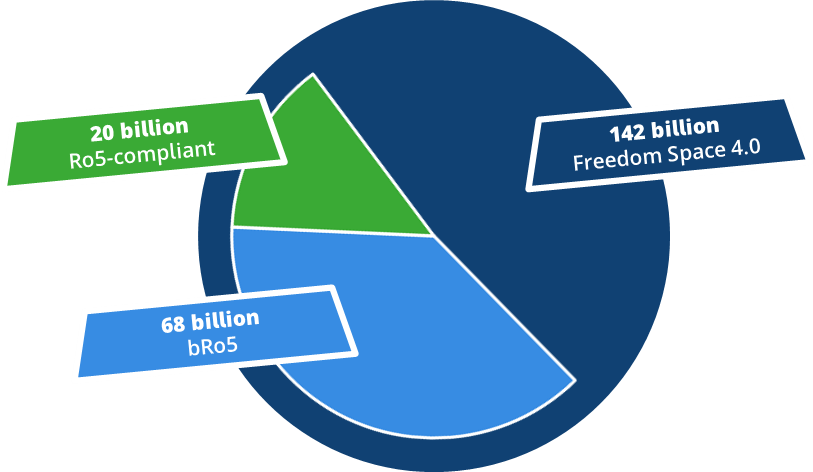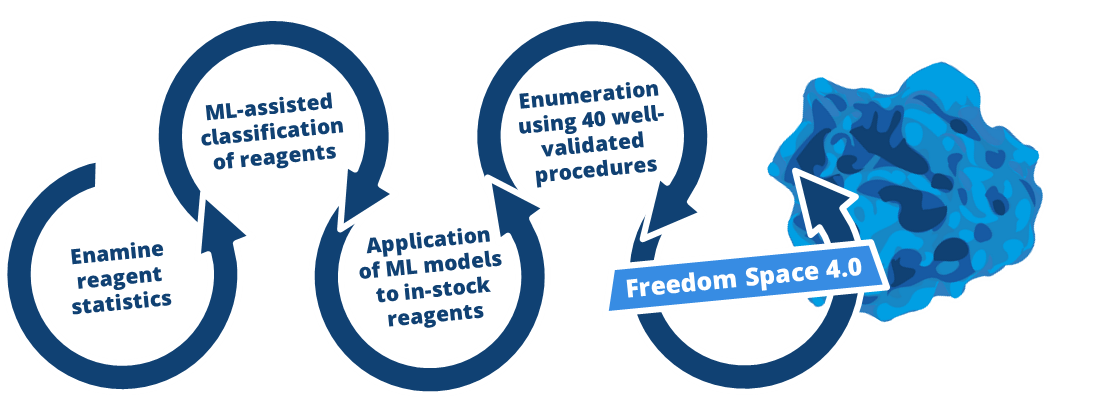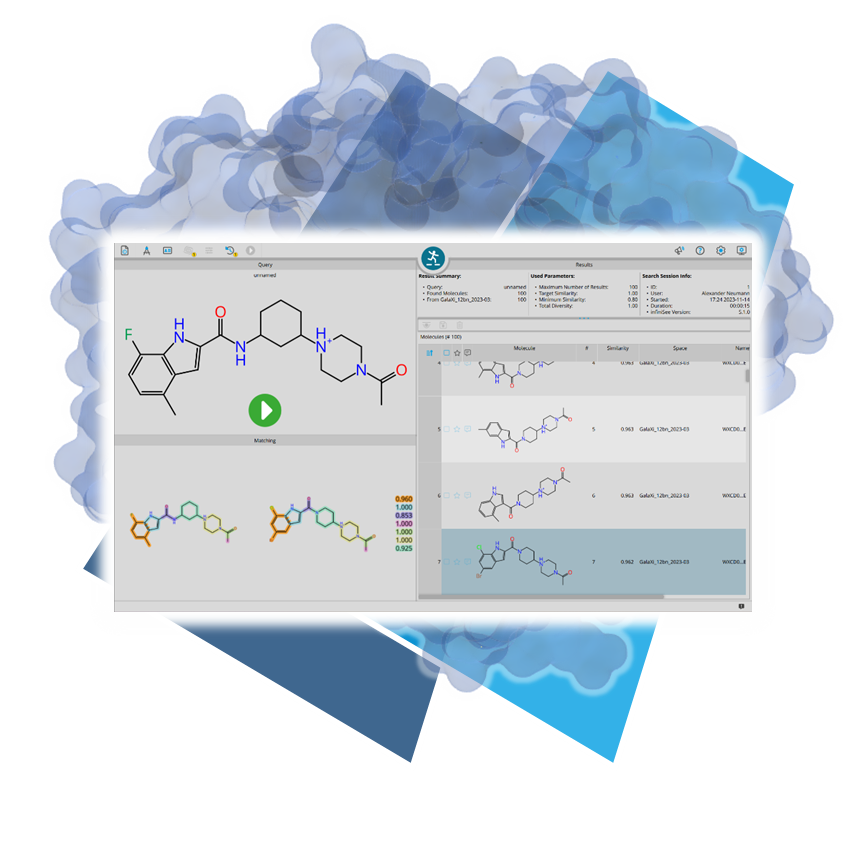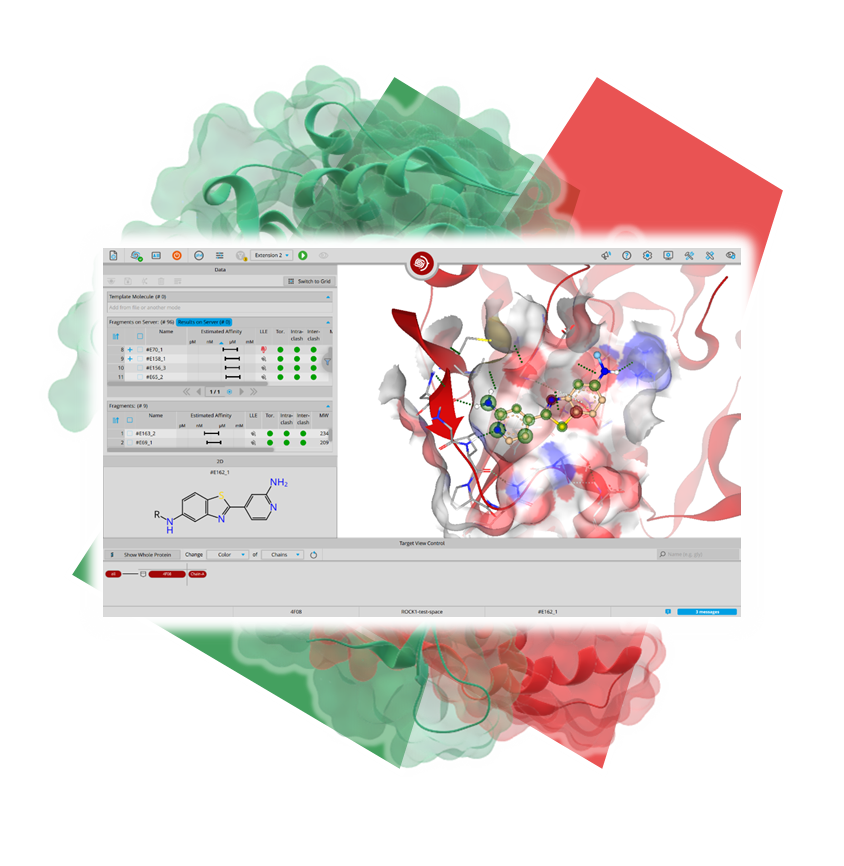Diversity by Design
The Freedom Space features 40 reaction protocols of two- and three-component reactions to expand the variety of relevant compounds. Chemical diversity is achieved through functionally diverse building blocks as well as by robust key medicinal chemistry reactions such as amide formation, condensation, arylation, reductive amination, urea formation, and Suzuki couplings.
